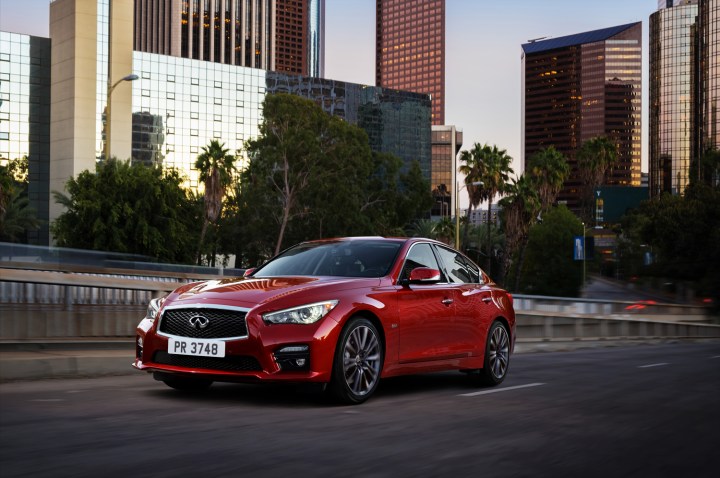
But Infiniti may soon leapfrog the competition with a crash program to add semi-autonomous features to most of its new models. These features will be added to new models as they are redesigned, Infiniti president Roland Krueger told Reuters in a recent interview. Infiniti is holding off on launching a fully autonomous car, though.
Infiniti already offers a steer-by-wire system on the Q50 sedan, and this will form the basis for a system that allows cars to drive themselves under certain conditions on highways. Called Direct Adaptive Steering, it severs the mechanical connection between the steering wheel and the road, instead using sensors to interpret the driver’s commands and apply steering. That makes it a logical building block for autonomous driving, since it already allows the car to make control inputs independent of the driver.
Read more: Tesla wants to share autonomous-driving data
The system already has the capability to keep a car centered in its lane, so combine it with adaptive cruise control and you get something very similar in capability to Tesla’s “Autopilot,” minus the ability to pass other cars by simply flicking a turn-signal stalk. Right now, the Q50 is the only model with Direct Adaptive Steering, but Infiniti could add the capability to other models as they are updated. The biggest obstacle could be current criticism of the system’s spooky characteristics when a human being is actually driving. At one point, Infiniti actually considered going back to a conventional steering system because of this.
A semi-autonomous driving system would bring Infiniti up to speed not only with Tesla, but also with luxury carmakers like Mercedes-Benz and Volvo that already offer similar technology. Cadillac is also expected to launch its semi-autonomous “Super Cruise” system in 2017, and the next-generation Audi A8 will be able to pilot itself through traffic jams.
These semi-autonomous systems equip cars with the hardware and most of the software needed for full self-driving capability. They are the building blocks to fully autonomous cars, but the technology won’t have a major impact until it moves beyond expensive luxury cars and assimilates more mainstream models.
Editors' Recommendations
- Tesla to begin production on new, more affordable models
- New Model 3 ‘takes out the baby fat,’ Tesla designer says in new video
- Beleaguered robotaxi startup Cruise lays off quarter of workforce
- Cruise woes prompt production halt of fully driverless van
- Cruise’s robotaxi service suspended by California regulator


